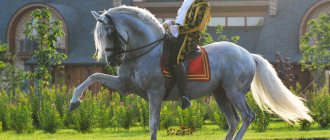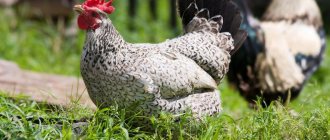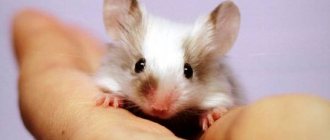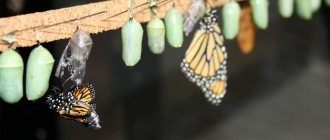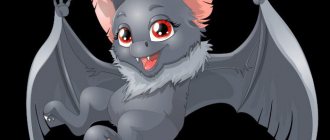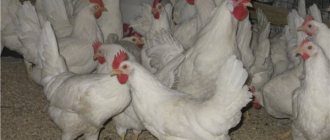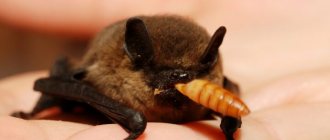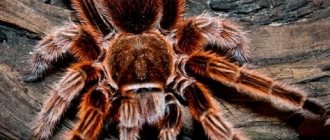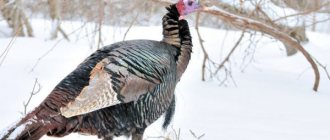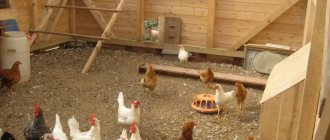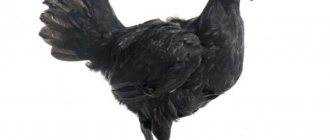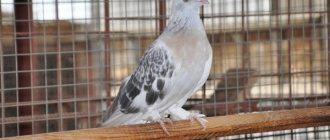Nutrition and feeding of the horse
Wild horses in their natural habitat eat only grass. Since they were domesticated, horses have become larger and their performance has increased, and with it the demands for better and more food.
Equine nutrition is a special area of constant research, but everyone agrees that horses require different nutrients in addition to roughage and water:
- squirrels
- fats/carbohydrates
- mineral salts
- vitamins (A, B, C, B)
Each horse should have an individual daily ration depending on its weight, the work performed, the climate and the horse's constitution, but on average a horse needs two to three percent of its weight; pregnant mares, growing foals and performance horses need a little more.
Horses can be given the following food:
- forage crops such as hay, alfalfa or silage;
- concentrates (grain concentrates like oats or non-grain concentrates like nuts);
- other food including barley, bran, flaxseed, sugar cubes, carrots, cabbage, apples;
- mineral and vitamin supplements, especially if they help cope with some disease;
- salt.
Feed your horse only fresh, quality food. Horses have very sensitive bodies, and moldy hay can cause severe allergic reactions and other problems. They can also be picky about water, which they will not drink if it is stagnant or kept in a dirty tank.
Horses need from 22 to 90 liters of water per day, because 50 percent of their body weight is water, which is essential for regulating body temperature, digestive processes and metabolism. It is also an important constituent of saliva, sweat and urine.
Horses are habit animals and like to be fed regularly at the same time. They have a relatively small stomach, only 8-15 liters in volume, so it is better to feed them a little three times a day rather than a lot twice a day.
Do not feed your horse immediately before or after work: a full stomach puts pressure on the lungs, reducing work efficiency, and immediately after exercise, food will not be fully absorbed. Changes to your horse's diet should be gradual; not only the animal itself must get used to the new food, but the gastrointestinal flora must adapt to it.
A healthy horse always has a good appetite. She should have strong, even teeth, so chewing food will not bring any pain. To prevent nutrients from being lost, you need to constantly fight parasites in the intestines.
An older horse will likely need more food and possibly special supplements to stay healthy. Don't forget that some plants are poisonous to horses. These are ragwort, foxglove and bracken. Also ask your veterinarian about other poisonous herbs found in your area.
What tools are needed to groom a horse?
We won’t talk about methods of cleaning horses, since they have certain differences in each stable, but the tools used are the same, so we’ll tell you a little about them without touching on the algorithm itself.
Cleaning a horse is sometimes difficult, since a horse is a rather capricious animal that must be handled very carefully, otherwise you may get hurt.
To clean a horse using any cleaning method, the following tools are used:
- A metal brush that should never be used to directly clean an animal; it is intended for cleaning with a soft brush.
- A rubber scraper is used not only to clean a soft brush, but also to remove stickers and large-scale dirt on the horse’s body. But at the same time, it is not recommended to clean the animal’s face and legs with this tool. To remove tapes on these parts of the body, especially near the leg tendons, it is best if you use a straw cord.
- The tool kit for cleaning a horse must include a special brush for the mane and tail (plastic hair scraper). By the way, it is often used instead of a rubber scraper.
- A mane and tail comb is designed to thoroughly clean the mane and tail of sawdust and other easily removable foreign contaminants, but, in my opinion, it is much more convenient and more humane to use a brush, since it rips out fewer hairs from the horse.
- The main brush used in grooming a horse is a soft brush. Without fear, you can clean absolutely the entire body of a horse, right down to the muzzle and legs, but the main condition for its use is that before you start working with this brush, the horse must be thoroughly cleaned of the main contamination.
- A hoof hook is needed to remove dirt from the hooves.
- Cloth is indispensable for removing excess moisture from the horse’s body.
In addition to these basic tools, the horse care arsenal also includes massage brushes, special brushes for the face and many other bells and whistles, which you can do without, but it is still advisable to have them.
Women's question
Probably, almost every girl and woman dreams of a prince on a white horse. However, the reality is more prosaic: in the equestrian world, the vast majority are representatives of the fair sex. Although if we talk about top-ranking athletes and coaches, these are, as a rule, men. Just like grooms, who require remarkable physical strength.
Women love to tinker with horses (as well as other animals); they enjoy the process of communicating with them. They are ready to feed their pets carrots, apples and other goodies, graze them, and go for walks with them. Men are more ambitious: they need speed and competition. And, I suspect, many men are afraid of horses: a car is simpler in this regard, it goes where the driver needs it. But a horse has a brain, you never know what comes into his head.
Guzel and Nabik
Horse cleaning and grooming
Cleaning the horse. The top layer of an animal's skin (epidermis) protects the body from damage and provides warmth. The inner layer (dermis) contains hair follicles, sebaceous and sweat glands, blood vessels and nerve endings. Sweating regulates body temperature and removes harmful substances from the body.
A domestic horse that works long hours every day and eats a higher calorie diet than its wild relatives will sweat more, so it is important to keep its skin clear of sweat and dandruff, which can cause skin diseases. The muscles of a sport horse also benefit from massage. The end result of the cleaning process is noticeable to everyone - it is an attractive appearance.
Tools:
- hoof cleaning hook - a blunt hook or wooden knife for removing dirt and stones from the hoof and cleaning the frog;
- hard brush - for removing dried dirt;
- an ordinary brush and a hair comb (they are used at the same time) - a horse is cleaned with a brush, and a brush is cleaned with a hair comb;
- sponge - one for the muzzle, the other for the buttocks;
- sweat scraper - a curved strip of rubber for removing sweat;
- tourniquet - a tightly twisted bundle of hay for massage;
- cloth - a cloth to add shine.
The horse is thoroughly cleaned before work, and after it is dried, sometimes washed.
Particular attention should be paid to morning brushing as the main one in preparing the horse for work; this will require quite a lot of time and effort.
1. Start with the hooves: use a hook to clean dirt from the sole and from the arrow grooves, and examine the stratum corneum.
2. Use a stiff brush to remove dried and matted dirt.
3. Then the whole horse is cleaned with a regular brush, it is customary to start from the neck and move to the hind legs, then move to the other side.
4. Then they wipe the muzzle and turnip with sponges.
5. Lastly, the mane and tail are tidied up (for riding horses, it is customary to lay the mane on the left side).
Horse grooming. The sturdy northern ponies and wild horses rarely sweat, for they rarely gallop more than they wish, and their long, greasy coat provides excellent protection from the cold. For working horses, thick hair brings obvious inconvenience and they are trimmed 2 times in winter: the first time in October or November, and then at the beginning of the year. In very cold times, the trimmed horse is covered with a blanket.
There are different haircuts: saddle, hunter, line cut, bib, apron, chase cut.
When preparing your horse for a performance, you can also decorate your horse:
- the mane and tail can be braided;
- rub the hooves with oil;
- You can make different patterns on the wool by combing it against the grain - the checkerboard pattern on the rump is very popular.
General recommendations
Lameness in a horse should alert the breeder. If a visual inspection does not reveal a stuck stone or debris in the sole, then you need to call a specialist.
Each horse handles heat differently . Not everyone knows that a horse can suffer from heatstroke. If you notice lethargy, muscle tremors, or refusal to eat, then you urgently need to give the horse a drink, pour cool water over it, put it in a shed and call a veterinarian.
Shoeing of a horse is done once a month in order to preserve the hooves from injury. Damaged hooves are restored with special orthopedic forging. It is necessary to carry out flea prevention in a timely manner. You can use veterinary pharmacy products, you can use wormwood essential oil.
The appearance of a horse will tell about its health. Healthy teeth, pink gums, a thick silky mane, the same tail, shiny fur, clean eyes, a nose, a calm state are signs of a healthy animal.
Keeping horses is not an easy and troublesome task. However, having learned everything, you will get a lot of positive emotions from communicating with the smartest and most beautiful creature on Earth. These emotions are so valuable and delightful that they cannot be compared with the time or financial costs.
Cleaning horse skin and fur
The Germans are considered one of the best horse breeders on the planet, so it’s worth listening to their folk wisdom, which translated into Russian sounds something like this: “A cleaned horse is a healthy horse.”
In particular, cleaning the skin and fur is necessary for horses that spend most of their time in stables rather than on the pasture. Those horses that often graze in open areas, on the contrary, do not need frequent brushing, otherwise it deprives them of a certain layer of their own fat secreted by the skin, and this protects them from dampness, rain, wind and cold.
However, it must be remembered that it is thorough cleaning that makes it possible to detect irritation and inflammation on the horse’s body, and it is always better to detect them in advance. By the way, before you start cleaning, remember the so-called “left side rule”, which says that when performing any manipulations with a horse, you need to approach it from the left side; cleaning is no exception to the rule.
To carefully but effectively clean your horse, you will need the following equipment:
- hair brush;
- a special vacuum cleaner for removing dust and dandruff and various attachments for it;
- two types of mittens: rough and velvet;
- if some areas of the horse’s fur are stuck together, then do not forget to take special scrapers with you to the stable to remove dust from the stuck areas of the hair;
- to comb the mane and tail, you will need either a wooden comb or a plastic brush (the main thing is that it does not have a strong odor, otherwise the horse may not react to it quite adequately);
- In addition to all of the above, you need to have a metal, or better yet, not so cold, plastic scraper designed to remove sweat from a horse.
Mating
Only healthy individuals who have reached a certain age are selected for mating.
Breeding horses at home requires the presence of at least two sires. Puberty in horses occurs between the ages of one and two years. But by this time, the animal’s body is still developing, so if you want to get healthy offspring, it is advisable to allow the mare to breed no earlier than three years. In some individuals, the period of full maturation occurs only at five years.
Proper horse trimming
The grace and elegance of horses has been admired at all times. But to maintain their beauty, constant and timely care is necessary, and an important care procedure is haircut. For it you will need: cotton wool and a hair clipper. Before the actual haircut, it is necessary to wash and clean the horse well, and also check the working condition of the clipper and the sharpness of its blades.
In addition, it would be better to have a spare machine in case this one breaks down. It is worth considering that a haircut can take up to 3 hours, so you need to choose the right time. Next, you need to prepare the horse for clipping.
1. She should be tied so that during this procedure her movements do not interfere with the person and she cannot harm herself.
2. Then you should take the clipper, without turning it on, and move it around the horse for several minutes so that it gets used to this kind of touch.
3. Then you can turn on the machine, but you should immediately lean it against the animal, you need the horse to get used to the sound. If she is nervous, you should plug her ears with cotton wool.
4. After the horse gets used to the sound of the running machine, you need to put your palm on the horse and put the machine on top so that the animal gets used to the vibration.
5. Now you can start cutting, you need to start from the bottom of the neck or shoulders. You need to run the clipper against the grain, while cutting long strips. The next strip should run parallel to the previous one and slightly overlap it.
6. You need to move square by square along the back.
7. After trimming the back, so that the horse does not freeze, you need to throw a blanket over its legs and start with it, and before that, wrap the tail so that it does not accidentally get under the razor. If the horse is nervous, then it is best not to cut the head. And after the haircut you can relax.
Pasture
Proper care and maintenance of horses must include daily walks. For these purposes, you can use special fenced areas - levadas. It is important that the levada is of the correct shape. Long but narrow strips of land are not suitable. The more space you can allocate for levada, the better.
A horse needs at least two hours of exercise every day. After a walk, you should definitely clean it, check the hooves and see if there are any wounds or abrasions on the legs. Please note that if the horse is grazed on the levada, then it already receives its necessary load.
Caring for horse hooves in winter
For some reason, it is believed that in winter, horses’ hooves need to be given less attention than in the warm season, but this is not true. Yes, they grow slower and leave the stables less, but you should not assume that reduced activity should deprive the horse’s legs of care, because if you neglect it, then by spring you may have considerable problems.
The least you can get as a gift with the arrival of warmer weather is rotting of the frog (a fungal infection that affects soft tissues), cracks, torn edges, etc. All this poses a threat to the integrity of the hoof.
Caring for a horse's hooves in winter has a kind of bonus: winter is the most suitable time to solve all the accumulated problems precisely because the horse walks less.
In winter there is an opportunity to correct and treat what was impossible in summer. The fact is that cracks, separation of the white line, growths on the walls of the hooves can be treated more intensively, and therefore treated precisely during the winter period, when the horse has the shortest working time of the year.
The horse's feet will temporarily cease to be as attractive as the horse owner would like, however, the hoof walls will finally return to their former health, which is important if you want your horse to be in excellent shape for as long as possible (hoof diseases usually lead to to their destruction, and as a result premature lameness occurs).
Rotten arrows are the most common winter disease. The good thing is that it is fairly easy to diagnose. It is enough to examine the horse’s hooves; if you see gray or black discharge and hear an unpleasant odor, rest assured, it’s time to contact a veterinarian.
To avoid such a problem, it is enough to protect the horse from dampness and dirt; for this you need to keep it in a clean and dry, but not overdried, stall (otherwise you will encounter a lot of other hoof health problems), and if foci of infection have already appeared, ask have a trusted, experienced blacksmith cut them off. After this procedure, veterinarians usually prescribe lime, hydrogen peroxide and pharmaceutical preparations, the use of which, however, is best discussed with a doctor.
Walk your horse frequently as snow cover is the safest and most suitable environment for horses' hooves.
Some tips for caring for your horse
- Horses need to be fed 3 to 6 times a day and, if possible, at the same time.
- It is necessary to feed the horse only high-quality feed.
- Keep buckets, sawdust, and feeders clean.
- Changing types of feed should be smooth.
- The horse must be watered three times a day and this must be done before distributing feed. A horse's water requirement is 30-60 liters per day. Depending on the horse breed, load, time of year and individual characteristics. The water temperature should be between 6-12°C. During particularly grueling work, add salt to the water; as a rule, 3-4 tablespoons are used per bucket of water.
- If the horse is in a stall, it must have constant access to salt.
Horses should not be fed fresh hay as this can cause colic. A minimum of 6 weeks must pass during which enzymatic maturation occurs. In summer, feeding plants that are too young should be avoided due to the fact that they contain large amounts of water and nitrogenous substances, which have a negative impact on the horse’s health.
Excessive consumption of bulky feed by a horse contributes to increased fermentation processes, which can lead to severe colic or volvulus. The amount of root and tuber crops fed to a horse should not exceed 15 kilograms per day, otherwise it threatens the horse with diarrhea.
Before starting work, it is necessary to clean the horse, comb the tail and mane, as this contributes to a greater degree of penetration of radiant energy into the horse’s skin, which is an integral component of the immune system. During work, the horse should always be well-fed and full of strength.
Also, do not forget about the most significant factor in good health and high performance of a horse - constant and thorough care for the condition of its hooves.
The importance of watering
The importance of water in a horse’s life is worth talking about in a separate section. It is strictly necessary to provide water twice a day, and the water temperature should be about 18-20°C.
The lucky owners of a sporting filly or foal should remember that she should never be given water immediately after finishing training; you need to wait about 1-1.5 hours.
It happens that a horse cannot calm his thirst. In this case, you can calm the animal in a cunning way: distract it from the water with food. Usually a handful of hay or grass is poured into a container with liquid, which switches the horse to food.
Horses, and especially foals, must have a place where they can hide from cold wind, rain or snow while keeping horses in winter. This can be a special room: a stable (stall) or an ordinary barn with a roof, where drinking bowls with clean running water should also be located.
Horse hygiene
An unfavorable microclimate can have a negative impact on animals, and can also be one of the main causes of various types of respiratory diseases in horses. Therefore, to optimize and regulate the microclimate, constant monitoring of its actual state is required.
As a rule, for this purpose, the physical properties of the air, its bacterial contamination, dust content and gas composition are determined.
You can record the temperature in the stable using a regular thermometer. Normal temperature for horses should be between +5 – +15 0C. Sharp fluctuations and higher temperatures negatively affect animal health. To maintain normal temperatures in winter, it is necessary to insulate the room in the fall. Most attention should be paid to sealing cracks in the ceiling, doors, windows, walls and eliminating all causes of drafts.
Using special instruments, bacterial contamination, dust content and air humidity are determined. In order to use them correctly, you should seek help from reference books on animal hygiene.
It is always necessary to remember that humid air and low temperatures can cause colds and rheumatism in horses. Also, when exposed to damp, cold air, an animal loses significantly more heat through its skin than at the same temperature, but in dry air. High temperatures in a damp stable can lead to overheating of the animal's body. The constant presence of damp air in the stable can provoke the development of microbes that can cause great harm to the health of horses.
Daily walks
Every horse needs daily walks. For this there must be a certain space: a pasture fenced with safe and durable material.
It is important to make sure that there are no grasses on the pasture that are harmful to the health of the animal. If the horse is in the stable for a long time, it needs to be warmed up. A walk should be an increase in vigor for the animal, and not a grueling ordeal.
Walking has several positive qualities: it strengthens the musculoskeletal system, restores the nervous and respiratory systems.
Any movement is useful and aimed at burning calories, which means that the animal is not at risk of excess weight. Every 2-3 weeks you need to give rhythmic exercise to the arena to strengthen the leg muscles and maintain shape. The longer the walks, the better.
Important! In winter, at a temperature of -20 degrees, the animal is not recommended to perform heavy work and work associated with fast running.
Bedding: sawdust, straw or peat
Horses are usually kept on bedding. It is like a feather bed and a pillow for their legs and body. It also absorbs all impurities. Sawdust is usually used for bedding, but sometimes straw and peat are also used. It can be changed or updated daily (usually in stalls, boxes, stalls), or it can be deep - in indoor housing. It changes only twice a year. The thickness of the replaced litter should be 10-15 cm. The cut of the “pillow” with deep litter is 20-50 cm, and maybe even more.
The litter must be clean and well absorbent. And it should not be rotten, dusty or moldy. Whole straw is best suited for this. Considering that horses readily eat barley and oat straw, it is necessary to give them less “appetizing” straw, wheat or rye.
Sawdust bedding is also widely used. But too dry or fine sawdust is dusty, so they must be constantly sprayed with water. But sawdust often gets lodged in horses' coats, manes and tails, making it more difficult to clean the horse. You can also use peat for bedding. It absorbs moisture well, but it seems so dark and gloomy that the stall looks dirty. Therefore, it is better to put straw on top of the peat.
In some stables, rubber mats are usually laid on the cold concrete paths on which horses are kept. Somewhere on top of the rubber mat is a layer of straw or sawdust.
Light work
Under such loads, animals, unlike temporarily idle relatives, require much more batteries. So, in energy and amino acids the difference is about 30%. The difference in calcium and phosphorus is 70 and 80%.
The energy capacity of the feed unit is 10.5 MJ.
The amount of hay and straw fed in winter is 8 and 4.5 kg, oats – 2.5 kg. Before concentrates, the animal is pampered with carrots - 2 kg per day. The vitamin and mineral part of the diet is improved by feeding the premix and salt - 150 and 30 g daily.
In summer, animals are fed pasture feed, hay (sometimes combined with straw) - 40 and 3.5 kg daily. They give oats - up to 2 kg. The winter norm of the premix is reduced by 50 g. Salt is given the same as in the winter.
